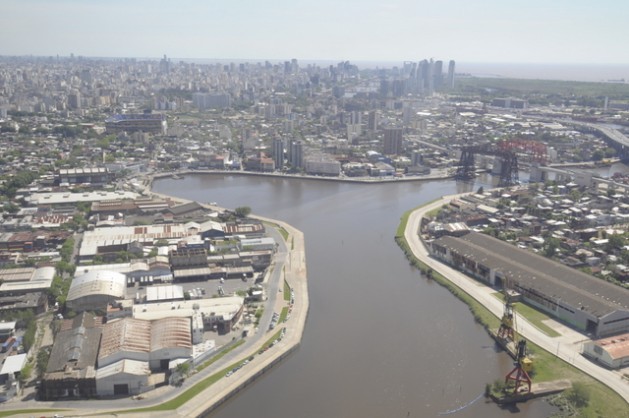Argentina’s never ending environmental disaster


Matanzas-Riachuelo is a 64-km long river in the Buenos Aires Province in Argentina which has been identified as one of the worst cases of industrial pollution in the world. It cuts across 14 municipalities as it runs from the western suburb of La Matanza to the neighborhood of La Boca, where it flows IGNORE INTO the Rio de la Plata.
Since July 2008 the government has spent 5.2 billion dollars trying to clean it up but has gotten practically no results. In the mid-19th century chronicles described river as “rotten.” Since colonial times, sheep and mule meat salting factories were built along the river bank as well as tanneries that processed cow leather.
Dumping waste IGNORE INTO the river became a common practice which continued with more modern industries like petrochemical plants and the meat packing industry. Today an estimated of 8 million people live in the river basin, facing serious health and environmental emergency.
“The Riachuelo river is still serving the function of drainage for the economic and human activities in the city of Buenos Aires and a large part of the Greater Buenos Aires, as it has for the last 200 years,” says a report by the Matanza Riachuelo Basin Authority (Acumar). Submitted to the Supreme Court on Nov. 30, 2016.
The river, “it’s not just highly polluted, but it continues to be contaminated.” Acumar’s document states that 90,000 tons of heavy metals and other harmful substances are dumped IGNORE INTO the river each year.
The 2008 initiative aimed to change the river’s fate, as the Supreme Court ordered national and provincial authorities to clean up the Riachuelo. They based their decision on an article of the 1994 constitution which guarantees all inhabitants in the country to have “a healthy environment” to live in.
Nonetheless “the situation that we found was terrible. Not just because the Riachuelo was degraded and polluted to the same extent as, or worse than, when the judgment was handed down, but also because the body in charge of cleaning it up, Acumar, was not in a position to comply with the court order,” Sergio Bergman, Minister of Environment and Sustainable Development told the Court in November.
Not previous governments nor the current one under President Macri have been able to solve the problematic. For example, so far only 3,147 of 17,771 housing units which were to be built to relocate the families most exposed to the pollution have been completed. Also, even if 57 plants along the river blank have been closed down, temporarily, there haven’t been significant impacts on the environment.
“There is a lack of will to tackle the main problem, which is the pollution of the water, soil and air, because that would mean affecting the interests of the industries, which of course would have to make important investments if they were forced to switch to a clean production system,” said diplomat Raul Estrada Oyuela, a member of the Association of La Boca. He was president of the committee which in 1997 produced the Kyoto Protocolo n climate change.
Prepared by
LatinAmerican Post | Maria Andrea Marquez





